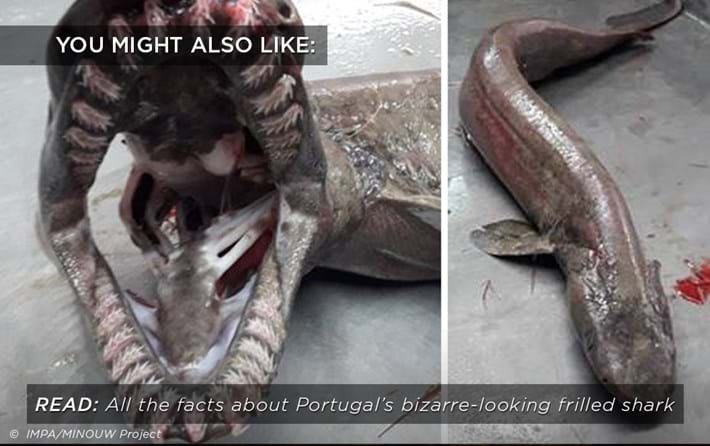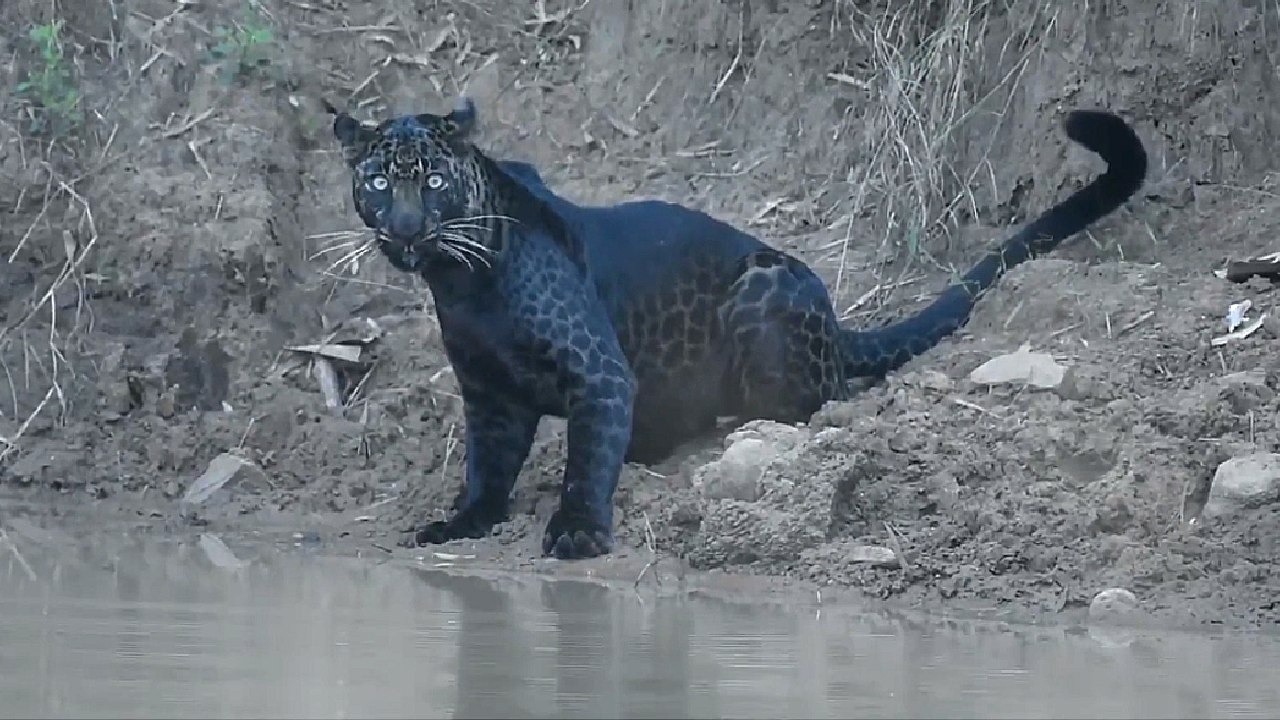Wildlife officials in Scotland have been investigating the death of a blue shark that washed up recently on a beach along the country’s rugged Moray coast.
Blue sharks are truly cosmopolitan animals that spend most of their time far offshore, so they rarely turn up in the surf. The unique sighting has generated several creative “theories” about the shark’s demise – some of them less plausible than others.
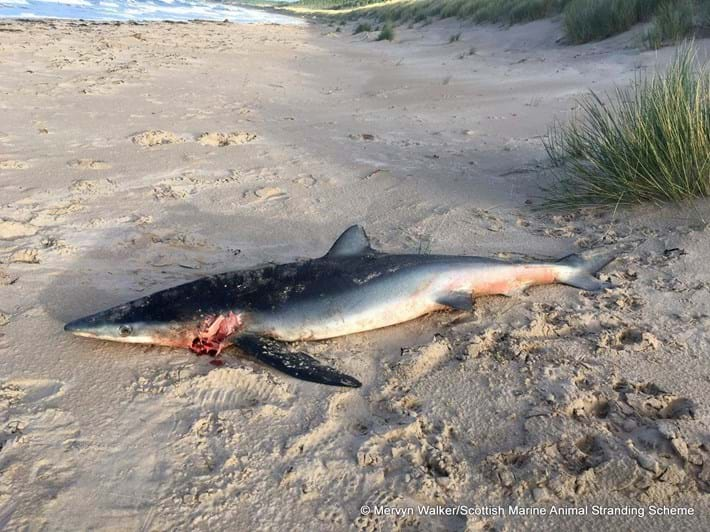 The blue shark washed up on Roseisle Beach on the Moray coast in northeast Scotland. Image: Mervyn Walker/SMASS
The blue shark washed up on Roseisle Beach on the Moray coast in northeast Scotland. Image: Mervyn Walker/SMASS
Perhaps the most intriguing suggestion is that the injury seen on the blue shark’s gills was inflicted by a dolphin. Despite their “Flipper”-inspired friendly reputations, dolphins can be fiercely territorial, especially in the presence of predators. And some pods have indeed mastered their defences against sharks: the social mammals occasionally ram threatening interlopers in a collective effort to drive them away. Scotland’s Moray Firth is home to a large number of bottlenose dolphins, but several details about this particular encounter suggest they’re unlikely culprits.
For starters, this blue shark (Prionace glauca) was a young female, measuring two metres (6ft) nose to tail. That’s a sizeable animal, but the shark would have weighed only as much as a medium-sized dog. The likelihood that this sub-adult targeted a dolphin capable of killing her is not very great. The remains of small cetaceans have been found in the bellies of larger blue sharks, but fishes and cephalopods make up the bulk of their diet.
What’s more, the team at the Scottish Marine Animal Stranding Scheme (SMASS), who conducted a necropsy on the washed-up shark, notes that the animal had lost more than a few gills by the time it was recovered. The carcass had been extensively scavenged, and many of the internal organs were either missing or incomplete. All that damage made it difficult to determine whether the gill wound was inflicted before or after death, though SMASS veterinary pathologist Dr Andrew Brownlow, who has led the team since 2009, believes the latter to be true.
“My suspicion is it probably isn’t the result of antemortem trauma,” says Brownlow. “This is a common area for scavengers to gain access to a carcass, and there certainly was no evidence for trauma inflicted by bottlenose dolphins in this case.”
Dolphin researcher Justin Gregg, who studies dolphin social behaviour, agrees, and notes that shark-ramming isn’t seen very often.
“There are a handful of documented incidents, but they are relatively rare and under some weird circumstances,” he says. “I’ve never seen blunt trauma on a shark caused by a dolphin. And I cannot imagine an intense injury like this being caused by a dolphin. Dolphins aren’t animals with a lot of sharp edges – even their teeth are blunt, used for grasping, not cutting. So, a giant open wound like this doesn’t seem like something a dolphin is capable of.”
Some online commenters have pointed out that the shark’s frayed flesh resembles injuries caused by boat propellers, and that’s a reasonable assumption to make. Over in South Africa, a great white (aptly nicknamed “Chopper”) showed similarly sliced gills after a run-in with a prop. Chopper’s wounds healed within a year, though a severe propeller gash could prove fatal in a youngster like this blue shark. A close look at its injury, however, reveals that the edges are “messier” than those usually left behind by rotating blades.
Instead, the team suspects the shark was discarded from a fishing vessel: accidental bycatch remains one of the major threats to blue sharks. The “nibbled” state of the carcass makes it difficult to pinpoint a definitive cause of death, however. “Nonetheless, we were able to take a number of measurements and samples, which can be used for genetic analysis at a later date,” says the team.
As for the animals that did the nibbling, any number of local species – other sharks, seals or sea birds, for example – may have shared in the spoils. (Orcas are known to dine on shark livers, but we’d expect to see even more damage on this shark carcass if one of Scotland’s monochrome behemoths had taken the lion’s share of this relatively small meal.)
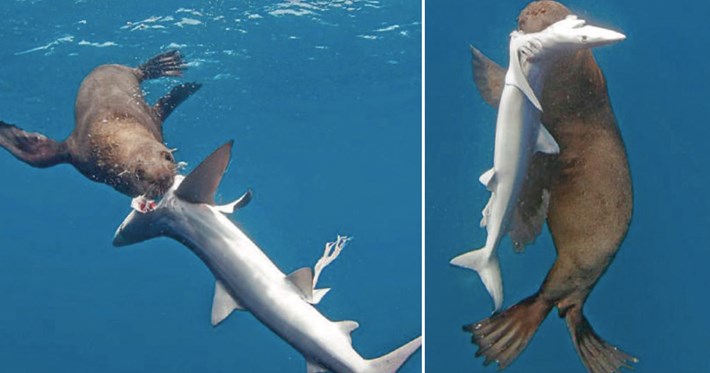 Cape fur seal consuming the viscera of a blue shark in 2012. Note the placement of the bite. Image: Fallows et al./African Journal of Marine Science
Cape fur seal consuming the viscera of a blue shark in 2012. Note the placement of the bite. Image: Fallows et al./African Journal of Marine Science
The samples obtained by SMASS will also be used to test for any contaminants that might have contributed to the shark’s death. Back in May, a veterinary pathologist at Scotland’s Rural College found that an orca known locally as “Lulu” harboured unprecedented levels of toxic pollutants in her tissues. Among these silent killers were polychlorinated biphenyls (PCBs), a group of industrial organic chemicals commonly used as insulating liquids in electronics, as well as during the production of copy paper and motor oil. Lulu showed the highest levels recorded in any whale.
Any information gained from examining the shark’s tissues will help inform local conservation decisions.
“Examination of stranded carcasses allows us a window into the health of the marine environment, and helps us to identify and quantify the threats and pressures affecting these top predator species,” says Brownlow. “In some cases, this provides samples and insights largely unobtainable by other means.”
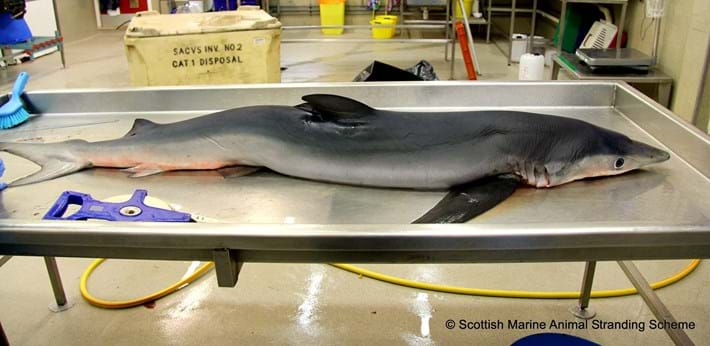 Image: SMASS
Image: SMASS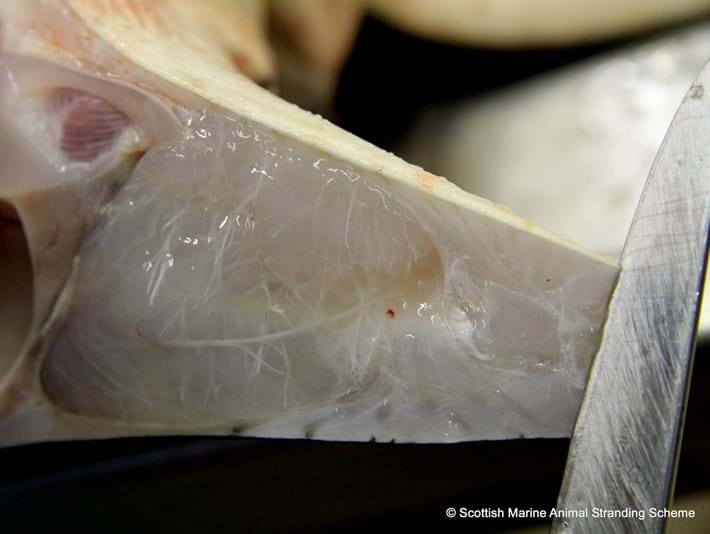 The jelly-filled canals seen in this cross-section of the snout help blue sharks sense the world around them. Image: SMASS
The jelly-filled canals seen in this cross-section of the snout help blue sharks sense the world around them. Image: SMASS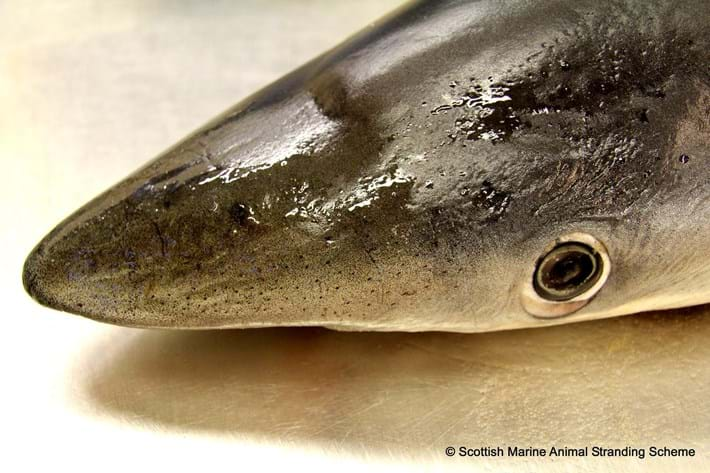 A close-up view of the shark’s sensory pores (ampullae of Lorenzini). Image: SMASS
A close-up view of the shark’s sensory pores (ampullae of Lorenzini). Image: SMASS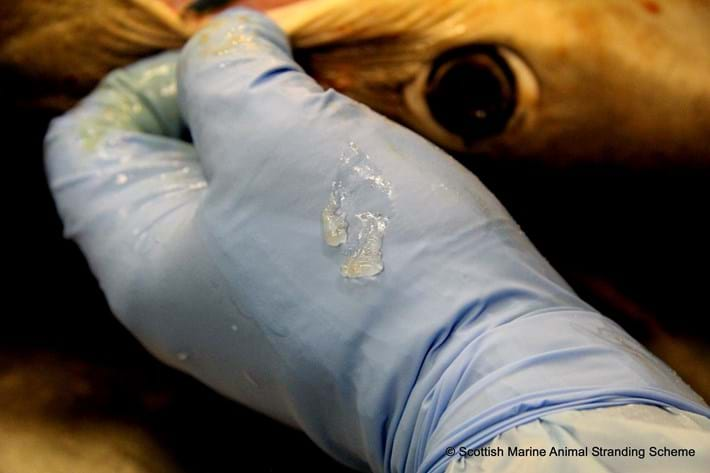 Jelly is sampled from the ampullae of Lorenzini during the shark’s necropsy. Image: SMASS
Jelly is sampled from the ampullae of Lorenzini during the shark’s necropsy. Image: SMASS